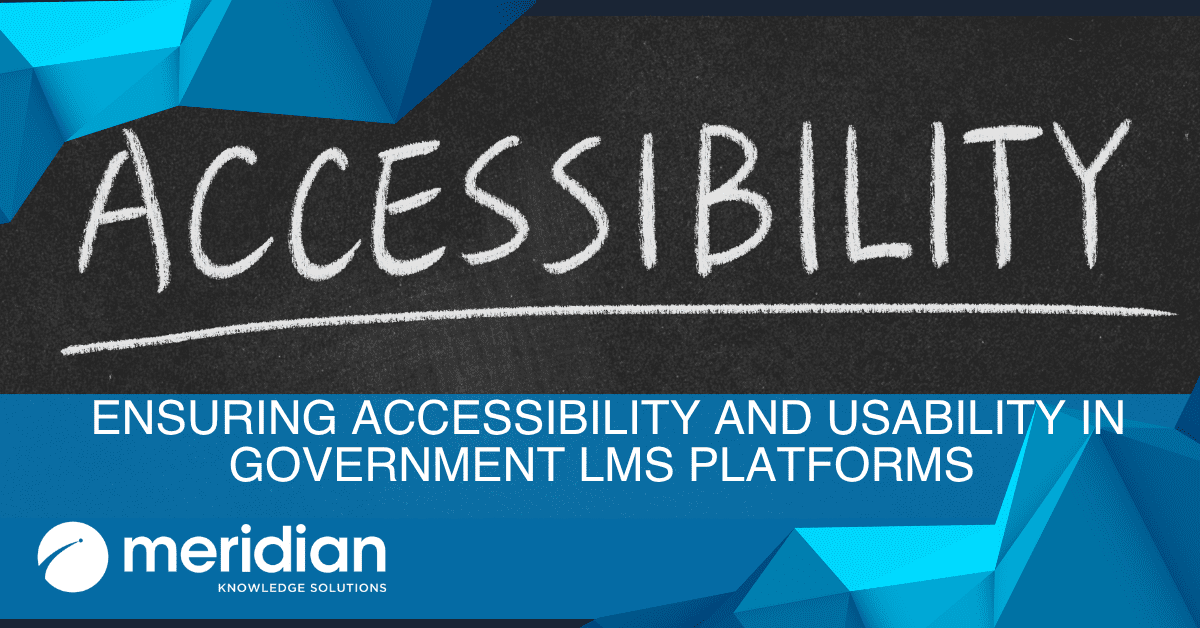
Learning management systems (LMS) have evolved dramatically in recent years. LMS administrators are now expected to navigate digital disruption, shifts in learner preferences, increasingly complex reporting needs, content management, blended learning approaches, and the day-to-day operation of their LMS platform.
It’s a lot to manage—especially across multiple audiences, workflows, and programs.
In this environment, surveys have become one of the most valuable tools in an administrator’s toolkit. When used strategically, surveys uncover insights that are difficult to capture through data alone. They validate whether training is effective, whether instructors are meeting expectations, and whether programs are achieving the outcomes they were designed for.
As Mike Larsen, Director of Product Management at Meridian Knowledge Solutions, puts it:
“Surveys help discern whether the training assignment, program, or instructor is any good. Good training improves performance, reduces problems, and prepares the workforce for the tasks ahead. Ineffective training wastes everyone’s time and gives a false sense of solving a problem.”
Surveys add a layer of human insight that enhances reporting, strengthens governance, and helps administrators continuously improve learning programs.
Below are the three essential survey types every LMS administrator should use.
Job performance surveys evaluate how well the training translates into real-world application. They go beyond “Did you like it?” and measure whether the learning actually improved the learner’s capability.
These surveys uncover:
Whether learners can apply the skills taught
Which course sections were most or least helpful
Whether the training aligned with their job needs
Whether the learner grew as a result of the course
Common questions include:
Which sections of the course were most valuable? Least valuable?
Did this course help you grow as a learner? How?
Where do you expect to apply what you learned?
These insights help administrators refine course content, increase interactivity, and ensure assignments match real learner needs.
These surveys evaluate the learner’s experience with the course itself or the instructor who facilitated it. They are easy to deploy at scale and can be automatically enforced within the LMS to ensure all learners provide feedback—not just those with strong opinions.
With an LMS-integrated survey tool, administrators can:
Automatically prompt learners upon course completion
Require survey completion to receive credit
Tie feedback to specific classes, instructors, or delivery formats
Capture contextual information that informs future improvements
Common questions include:
Did the course or instructor meet your expectations?
Was the content delivered clearly and effectively?
What improvements would you recommend?
These surveys help identify instructional strengths, course gaps, and ways to enhance learning experiences.
Program evaluation surveys assess the overall effectiveness of a learning program—not just a single course. They collect feedback from all participants and can be segmented by role, department, or learner type.
For example, a safety compliance program in a hospital may include physicians, nurses, care managers, and administrative staff. Each group may experience the training differently, and their combined feedback offers a full view of program impact.
Common questions include:
Was the course site easy to access? If not, what would you recommend?
Was the course easy to navigate?
Was the program too long, too short, or just right?
These surveys uncover systemic issues, highlight best practices, and help determine whether a program is achieving its intended goals.
Surveys offer intrinsic value by capturing learners’ lived experience—something data alone cannot provide. When combined with LMS analytics (completion rates, performance scores, time spent, etc.), surveys create a clearer, more actionable picture.
Together, these insights help LMS administrators:
Validate training effectiveness
Improve course design and delivery
Strengthen instructor performance
Identify program-level trends
Align learning outcomes with organizational goals
By incorporating job performance, satisfaction, and program evaluation surveys into their workflow, administrators gain the visibility needed to guide their learning ecosystem with confidence.